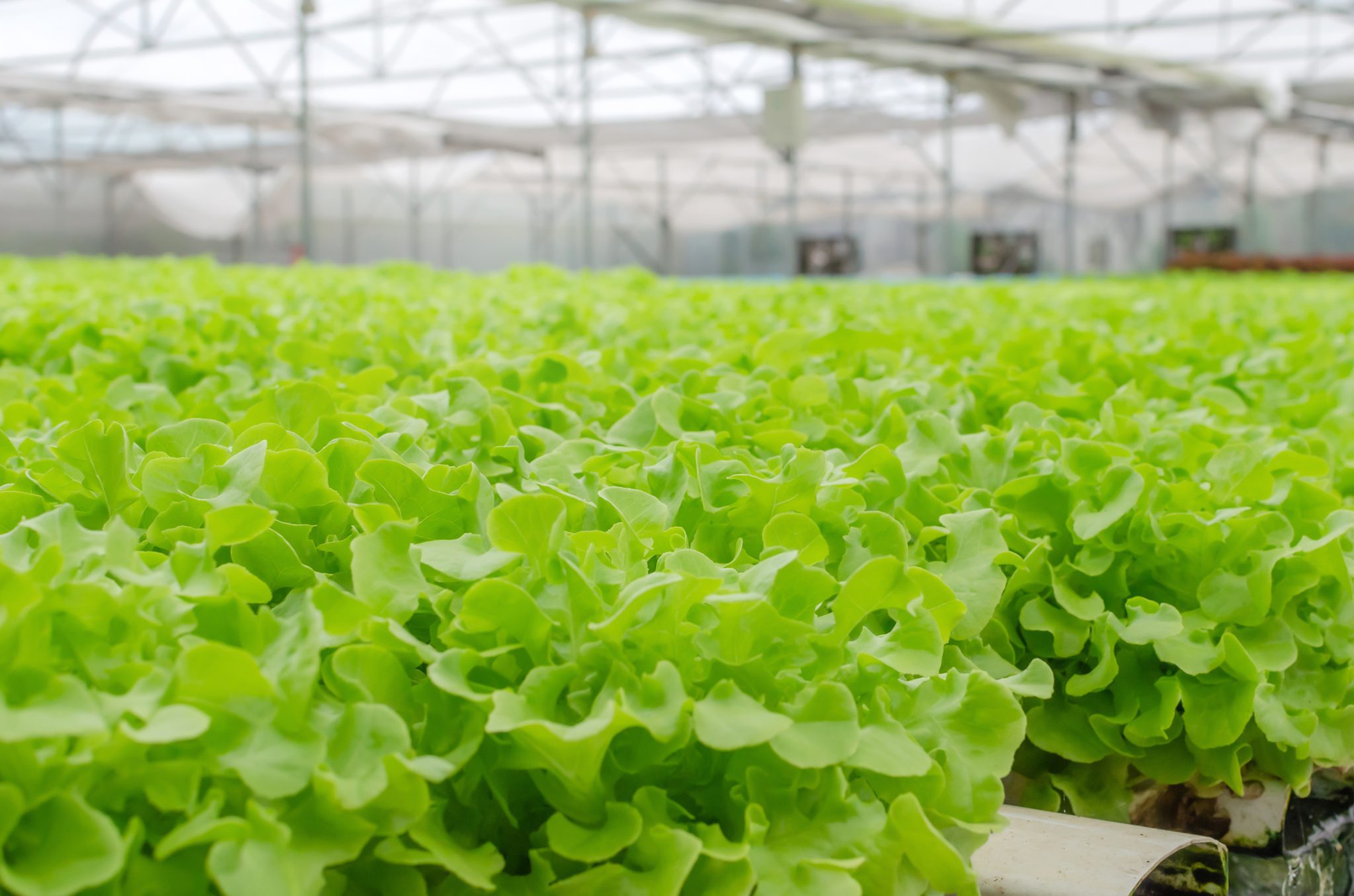Crop Production

More and more people are interested in utilizing greenhouses for hydroponic vegetable production. Greenhouses can produce vegetables almost anywhere, regardless of soil type. Growing vegetables in greenhouses can allow for near year-round output of high-quality products. The hydroponic production systems used in these facilities are dramatically more efficient with water and fertilizer. However, despite the benefits, these systems are energy intensive with significantly higher production costs. Additionally, the cost advantages and–for direct market operations–proximity to urban areas have a significant influence on the profitability of greenhouse vegetable operations.
Before getting started in a greenhouse production system, there are many aspects that must be considered. The Alabama Greenhouse Vegetable Handbook is here to help provide some answers. The handbook’s eight chapters provide an overview of some of the more popular vegetable crops grown in greenhouses and the different production systems used.
Chapter 1: Greenhouse Lettuce Production
Greenhouse lettuce is one of the easier hydroponic crops to grow. It has short crop cycles, low-labor demands, and can be grown year-round. Lettuce production in hydroponic greenhouse system is factory like in the way it allows for the production of a high-quality crop on a consistent schedule. This chapter overviews the production systems and important considerations surrounding greenhouse lettuce production.
Read Greenhouse Lettuce Production
Video: Economics of Greenhouse Lettuce
Video: Overview of Hydroponic Lettuce
Chapter 2: Greenhouse Cucumber Production
Greenhouse cucumbers have a lot of potential as a greenhouse crop in Alabama. Cucumbers can begin setting fruit in as little as five weeks after transplanting and can handle Alabama’s hot summer temperatures. In this chapter, learn the basics of greenhouse cucumber production, including seeding production; training, pruning, and spacing; the greenhouse environment; fertilization and irrigation; and harvesting and fruit quality.
Read Greenhouse Cucumber Production
Video: An Overview of Hydroponic Cucumbers
Chapter 3: Greenhouse Tomato Production
Tomatoes are the most widely produced greenhouse crop in the world. A large percentage of fresh-market tomatoes are grown in Canada and Mexico, and the United States is slowly building a market presence.
Read Greenhouse Tomato Production
Chapter 4: Controlling the Greenhouse Environment for Vegetable Crops
Controlling the greenhouse environment can be challenging because greenhouses have a great capacity to gain heat during the day and lose heat rapidly due to low nighttime temperatures. The fundamental principles behind managing a greenhouse environment can be widely applied, regardless of the purpose.
Read Controlling the Greenhouse Environment for Vegetable Crops
Chapter 5: Transplant Production for Hydroponic & Greenhouse Systems
Read Transplant Production for Hydroponic & Greenhouse Systems
Chapter 6: Fertilizing Greenhouse Crops
Coming Soon
Chapter 7: Integrated Pest Management in Greenhouse Vegetables
Coming Soon
Chapter 8: Produce Safety for Greenhouse Vegetable Production
Foodborne illnesses affect nearly 48 million people on a yearly basis. Food safety is a primary concern not only for consumers but for growers as well. Lettuce and other leafy greens are notorious for foodborne illness outbreaks since there are few methods for eliminating pathogens from raw produce prior to consumption.
Read Produce Safety for Greenhouse Vegetable Production

Jeremy Pickens, Assistant Extension Professor, Commercial Horticulture, Auburn University
New September 2022, Alabama Greenhouse Vegetable Handbook
The Alabama Greenhouse Vegetable Handbook was made possible through funding provided by the Alabama Department of Agriculture & Industries (ADAI) Specialty Crop Block Grant Program. Thank you to ADAI for their support in this project.

